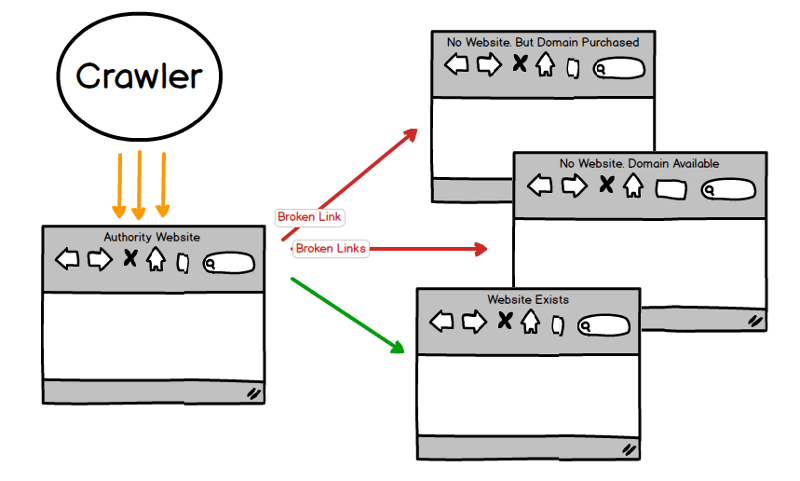All Categories
Featured
Table of Contents
- – What Is The Premier Semantic Seo Content Analy...
- – Who Is The Most Reliable Semantic Content Stra...
- – When Are The Top What Is Semantic Seo Sales
- – When Are The Top Semantic Search Optimization...
- – What's The Top Semantic Seo For Beginners
- – What Is The Most Reliable Semantic Seo Brand
- – Is It Worth Paying For Improving Rankings Wi...
The web is altering, coming to be a growing number of semantic. Search engine optimization is likewise changing and coming to be more semantic. This is since search engines have progressed and are moving a lot more and much more towards checking out web content on the internet. Certainly, that has actually additionally changed the way we create web content, particularly if we want to rate much better in the online search engine.
Intertwingularity is not typically recognized, people keep claiming they can make things deeply hierarchical, categorizable and consecutive when they can not. Based on the partnerships in between search intentions, the search engine prefers a material in placing by determining the distance in between the vectors of definition.
It permits you to see, beginning with a topic, all the entities that relate to that topic. By doing this you can plainly see which entities/concepts/ideas have already been covered on your internet site, and you can discover new opportunities by understanding what content you can include and how to develop it.
What Is The Premier Semantic Seo Content Analysis Company?
It is able to make your content reasonable for search engines on the one hand and for your audience on the various other. Structuring your web content design highlights your web content and its hidden connections so that online search engine can identify you amongst thousands of pieces of information, making you a lot more noticeable to users that fulfill the search intent associated to your company.
In semantic search engine optimization copywriting, an editor starts from a wider variety of subjects and tailors the content to consist of semantically appropriate terms and expressions that aid visitors understand a subject, comparable to reviewing content in a wiki. From a material composing perspective, one sensible way to do this is to create a vocabulary of terms and questions bordering your target topic.
Who Is The Most Reliable Semantic Content Strategies Service
Discover extra concerning by viewing the by!.

Semantic search describes the procedure of exactly how search engines recognize and match key words to a searcher's intent in organic search results page. Prior to semantic search, search engines like Google ran like matchmakersaligning particular words in your question with those exact words on pages. The outcomes were straightforward yet commonly lacked depth.
When Are The Top What Is Semantic Seo Sales
It allows Google to supply fast, precise solutions to look inquiries concerning real-world subjects. When you type a query word right into Google, you're not simply going into a series of words. You take advantage of a complicated internet of meanings and links. Google's Expertise Chart sees these words as entities with context and partnerships.
When you browse for "Apple," Google does not just see a word that defines a fruit. It recognizes Apple as a firm and can offer associated info. It was Google's answer to the rise of voice searches, where questions became extra conversational and nuanced.
When Are The Top Semantic Search Optimization Deals
By integrating NLP, Hummingbird allowed Google to move beyond simple keyword matching. It helped the search engine comprehend search intent, enhancing the chances that results would accurately match the reason behind a customer's search.
RankBrain is an artificial intelligence system that aids Google translate questions it hasn't seen before. It can make guesses about words and expressions it doesn't recognize and filter results appropriately. Making it a lot more efficient at taking care of never-before-seen search questions. RankBrain takes into consideration even more than simply key words when examining a search question.
So it brings outcomes that match the key phrases and line up with the overall intent of giving young puppy training recommendations. And if the individual often searches for dog-related web content, Google may focus on much more detailed training guidesrecognizing the user's ongoing rate of interest in the subject. Integrating modern technologies like the Expertise Graph, Hummingbird, and RankBrain, semantic search aids the Google formula analyze and connect data across a large internet of info.
What's The Top Semantic Seo For Beginners
The emphasis changes from keyword choice to an all natural method incorporating individual intent, topical significance, and overall user experience. Producing web content that addresses the searcher's demands with comprehensive info can boost your SERP positions. Listed below, we detail the patterns and techniques that consolidate the need for semantically educated material. Later, we supply actionable suggestions to transform these insights into best practices.
A broader approach to material aligns better with semantic search's change away from precise key words matching and toward customer intent. Web content that covers search inquiries much more extensively not only pleases users.
UX aims to create an aesthetically appealing, easy to use user interface with engaging, high quality content that urges visitors to remain. Semantic search innovation allows search engines to aim for results that offer the ideal possible UX.
What Is The Most Reliable Semantic Seo Brand

All display Google's ability to attend to a topic question comprehensively. By recognizing the context and intent behind customer inquiries, online search engine can deliver a lot more relevant details and potentially enhance individual involvement. Customization in search results produces better UX.Based on your past search background and choices as an individual, semantic search helps online search engine customize the results to suit your distinct needs and interests.
It fetches results that match the search phrases and line up with the total intent of providing pup training suggestions. And if the individual often looks for dog-related content, Google could focus on much more detailed training guidesrecognizing the user's ongoing rate of interest in the subject. Incorporating modern technologies like the Understanding Chart, Hummingbird, and RankBrain, semantic search aids the Google formula interpret and connect data across a vast web of info.
Is It Worth Paying For Improving Rankings With Semantic Seo?
The emphasis shifts from keyword choice to an all natural method encompassing individual intent, topical significance, and general user experience. Producing content that attends to the searcher's requirements with comprehensive info can improve your SERP positions.

And kind of web content can best please their requirements. A wider strategy to material aligns much better with semantic search's shift far from precise key words matching and toward user intent. Which describes the enhanced focus on subject collections, rather than individual key phrases. Material that covers search questions much more completely not just pleases customers.
And 5 times more than websites that take 10 secs to load. While technical SEO makes sure ideal web site efficiency and access, concentrating on individual experience (UX) takes it an action additionally. UX intends to develop an aesthetically attractive, easy to use user interface with appealing, top quality web content that urges visitors to stay. Semantic search innovation allows internet search engine to go for results that give the most effective possible UX.
All showcase Google's ability to resolve a topic query adequately. By comprehending the context and intent behind individual inquiries, internet search engine can deliver a lot more relevant information and possibly boost customer engagement. Customization in search engine result creates far better UX.Based on your past search background and choices as a user, semantic search helps search engines customize the outcomes to fit your unique demands and rate of interests.
Table of Contents
- – What Is The Premier Semantic Seo Content Analy...
- – Who Is The Most Reliable Semantic Content Stra...
- – When Are The Top What Is Semantic Seo Sales
- – When Are The Top Semantic Search Optimization...
- – What's The Top Semantic Seo For Beginners
- – What Is The Most Reliable Semantic Seo Brand
- – Is It Worth Paying For Improving Rankings Wi...
Latest Posts
Who Is The Leading Semantic Seo Best Practices Company
Who Has The Most Recommended Tools For Semantic Seo Service?
What's The Top Optimizing For Search Intent
More
Latest Posts
Who Is The Leading Semantic Seo Best Practices Company
Who Has The Most Recommended Tools For Semantic Seo Service?
What's The Top Optimizing For Search Intent